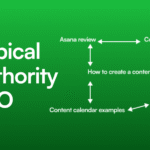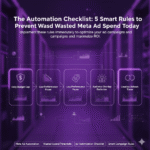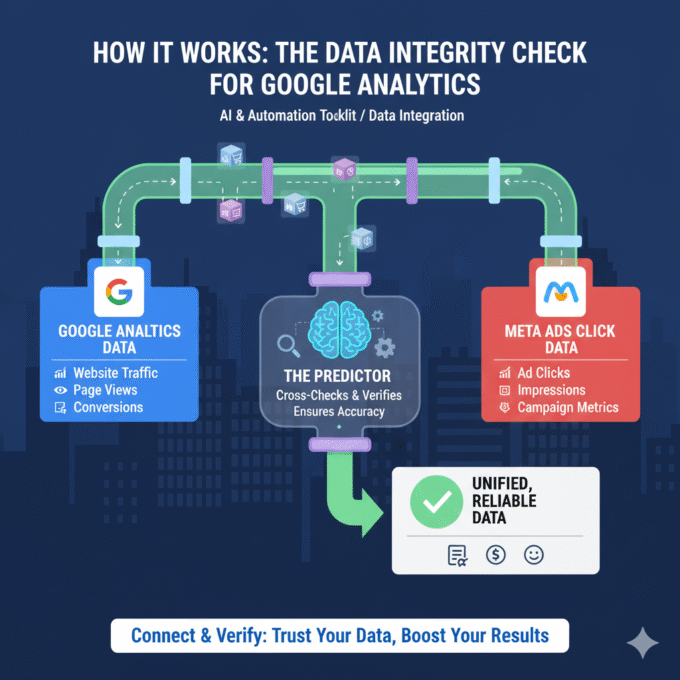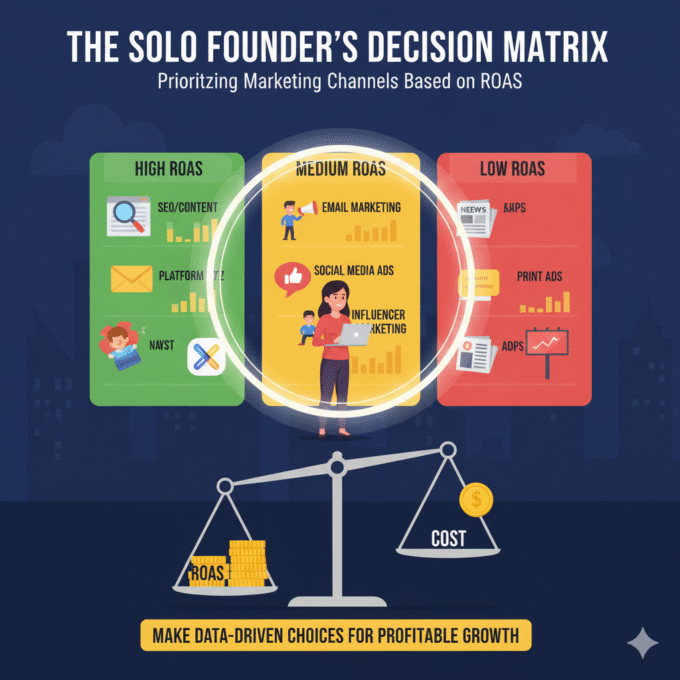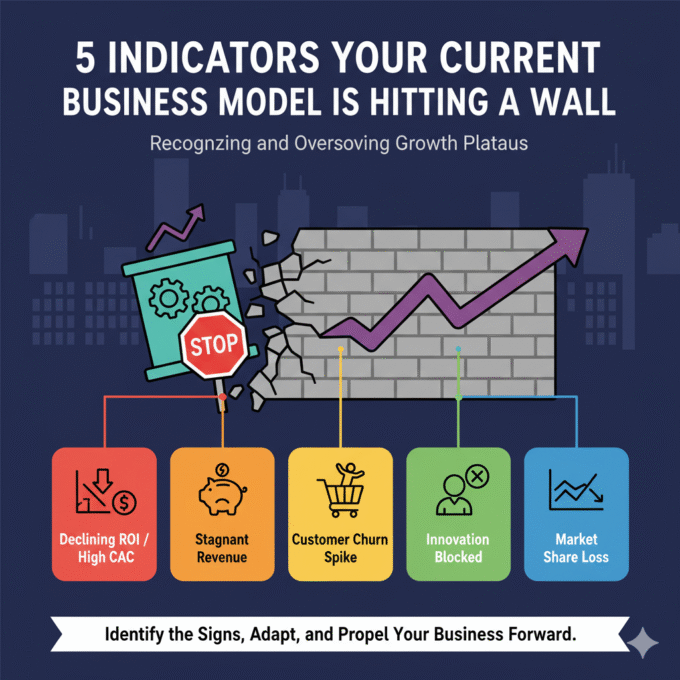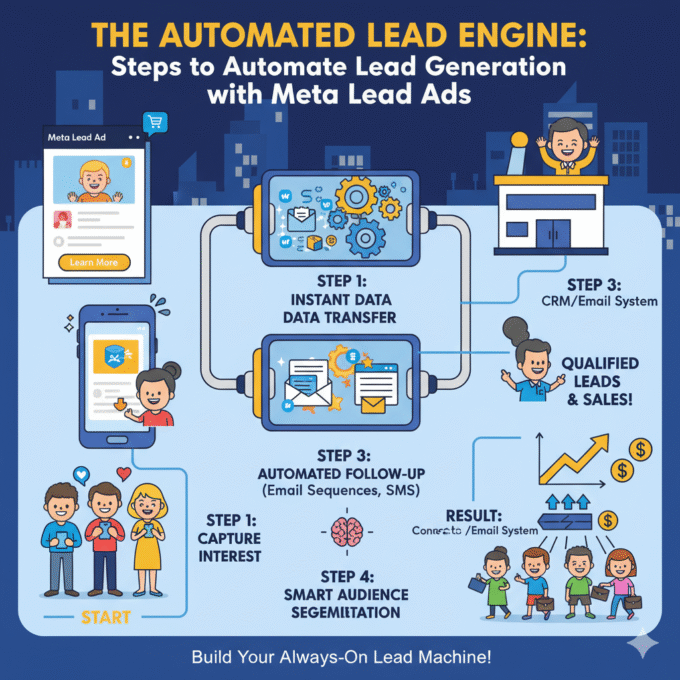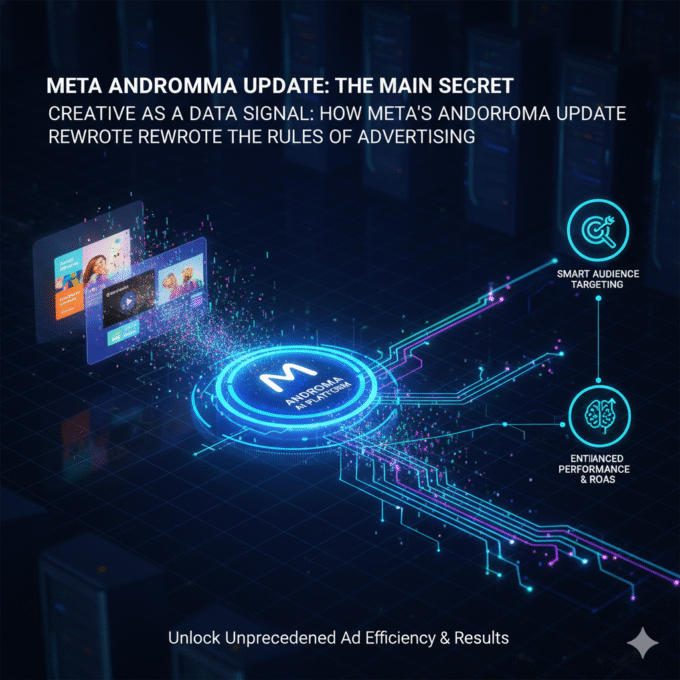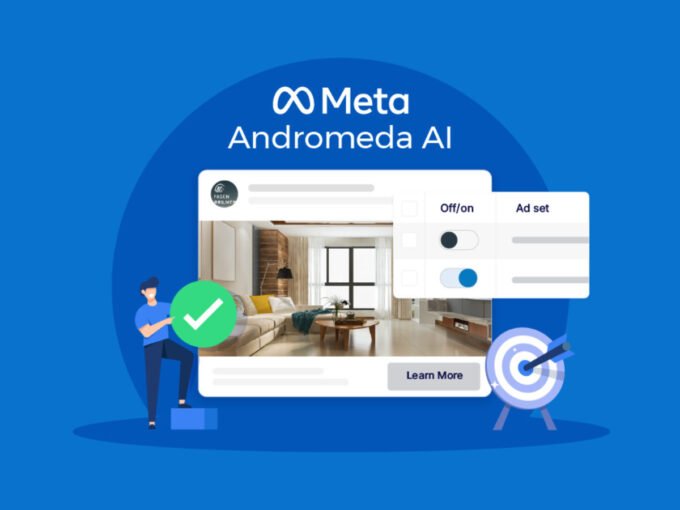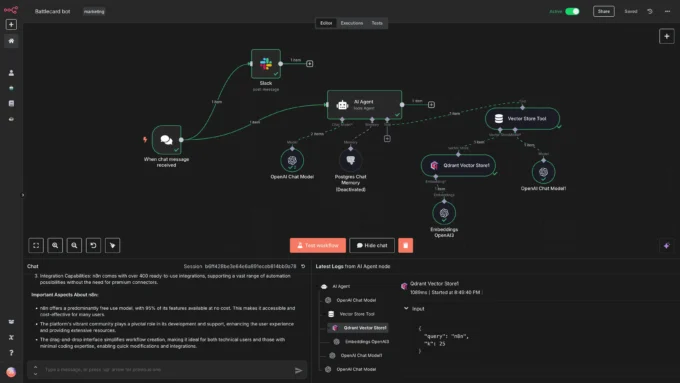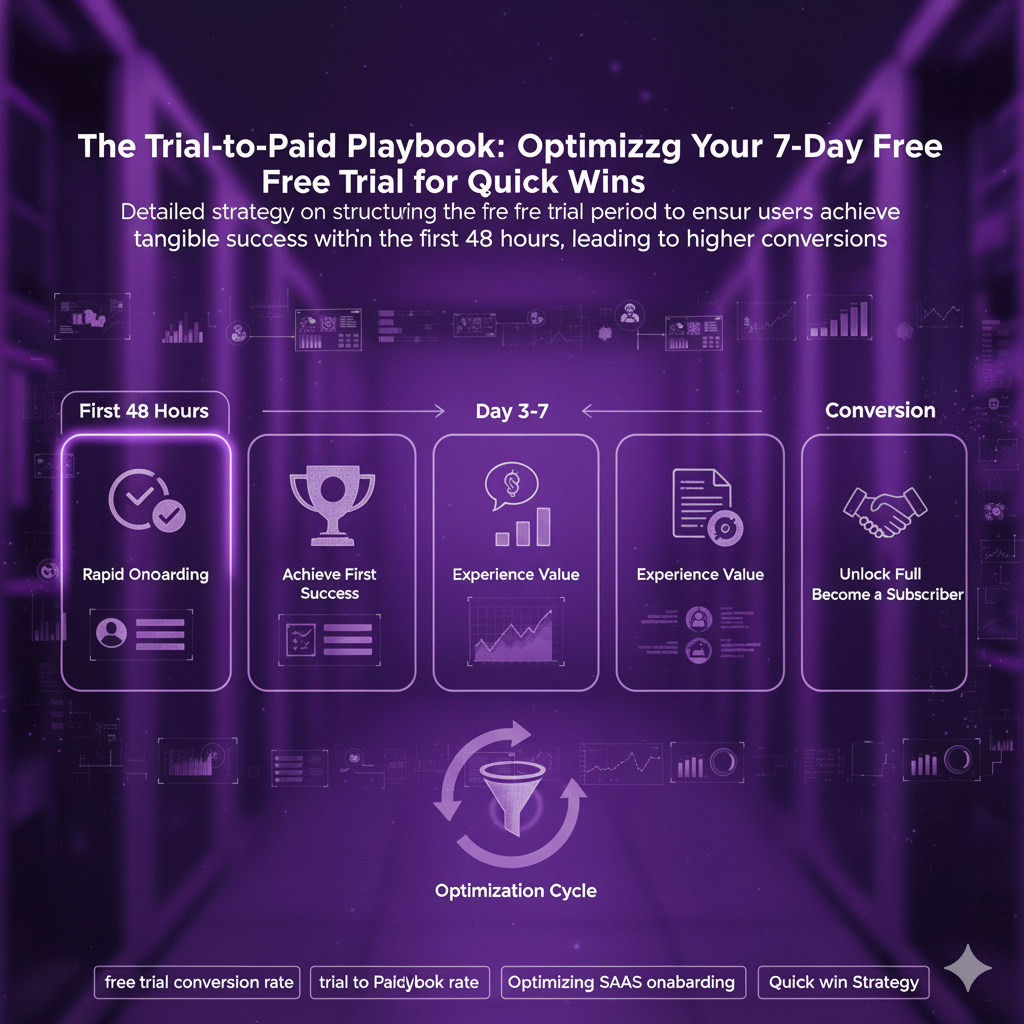
The Trial-to-Paid Playbook: Optimizing Your 7-Day Free Trial for Quick
September 28, 20255 Mins read26 ViewsThe Trial-to-Paid Playbook: Optimizing Your 7-Day Free Trial for Quick Wins
Wins Detailed strategy on structuring the free trial period to ensure users achieve tangible success within the first 48 hours, leading to higher conversions.free trial conversion rate, trial to paid playbook, optimizing SaaS onboarding, quick win strategy.

You’ve done the hard work. Your marketing funnels are driving thousands of sign-ups every month. Your product page is a work of art. But when you look at your dashboard, the free trial conversion rate is a sobering, single-digit number. It feels like a leaky bucket—a high volume of leads flowing in, but only a trickle of paying customers making it out.
The common misconception is that a free trial’s success is determined by its duration. Is 7 days better than 14? Should we offer a free plan instead? While these questions are important, they miss the fundamental truth of trial conversion: it’s not about the length of time you give users, but about the speed at which you help them achieve a meaningful outcome.
The solution isn’t to lengthen your trial; it’s to create a rigorous “trial-to-paid playbook” that is laser-focused on one thing: guiding your users to a tangible “quick win” within the first 48 hours. This playbook will provide you with a detailed, step-by-step strategy to transform your free trial into a powerful conversion engine.
The New Mindset: From “Free Access” to “First-Mile Success”
A free trial should not be treated as a passive sandbox for users to explore. It’s a structured journey designed to solve a problem. Your goal is to guide the user from “I have a problem” to “This product solves my problem” as quickly and efficiently as possible.
A “quick win” is that magical moment when a user experiences your product’s core value for the first time. For a project management tool, it could be successfully delegating their first task and seeing it completed. For an email marketing platform, it might be sending their first email campaign and seeing real-time engagement data. This is the “Aha! Moment” that makes them realize your product is not just a nice-to-have, but a must-have.
Your entire trial strategy must be built around creating this moment, ideally within the first 48 hours, before a user’s initial motivation wanes.
The Pre-Trial Setup: Before They Even Sign Up
The success of your trial begins before a single user clicks “Start Free Trial.”
- Clarity is King: Your landing page and sign-up forms must clearly communicate what your trial offers and what the user needs to do to succeed. Avoid vague language. For example, instead of “Start your free trial today,” try “Start your free trial and launch your first email campaign in 5 minutes.”
- Minimize Friction: The sign-up form should be as short as possible. Only ask for essential information like an email address. Asking for a credit card, job title, or company size at this stage is a conversion killer. You can gather this information later, once they’ve experienced the value.
The 7-Day Free Trial Playbook: A Step-by-Step Guide
Here is a practical, day-by-day plan for optimizing your SaaS onboarding and maximizing your free trial conversion rate.
Day 0: The First 5 Minutes – Welcome & Onboarding
The moment a user signs up is your golden window. This is when their motivation is highest.
- Action 1: The Immediate Welcome Email. Send a friendly, immediate email. Acknowledge their sign-up, restate the trial’s value proposition, and provide a clear call-to-action to get started. Don’t include too many links or buttons—the goal is to get them back into the app.
- Action 2: The In-App Guided Tour. When they first log in, their experience should be a guided path, not a maze. Use tooltips, interactive guides, or a clear progress checklist. For a design tool, it might be “Click here to create your first design.” For an analytics tool, it’s “Connect your data source to see your first report.”
- Action 3: Funnel Them to the Quick Win. Your onboarding process should directly lead the user to their first meaningful action. Don’t show them every feature. Show them the one feature that will deliver the most immediate value.
Day 1: The Follow-Up & Re-Engagement
Many users will drop off after the first day. Your job is to pull them back in.
- Action 1: The 24-Hour Email. Send a follow-up email that reminds them of the next step. If they haven’t taken the quick-win action, provide a simple, concise reminder. “Still haven’t launched your first campaign? Here’s a quick 2-minute video on how to do it.”
- Action 2: The Value Reinforcement. Use this email to showcase a benefit they may have missed. Include a short customer testimonial or a simple use case that demonstrates the product’s value in a real-world scenario.
- Action 3: In-App Nudges. If they log back in, use in-app notifications or a progress bar to gently push them toward completing key actions.
Days 2-5: The Value Demonstration & Support
The focus now shifts from getting them started to showing them the depth of your product and providing support.
- Action 1: The “Pro-Tip” Email. Send a valuable tip or highlight a less-known feature. This shows the power of your product and can reignite their interest. For a project management tool, this might be a tip on using templates or custom fields.
- Action 2: The Human Touch. Depending on your business model, consider a personal message. A quick, friendly check-in via live chat or a personal email from a customer success manager can dramatically increase engagement and make the user feel supported.
- Action 3: The Case Study. Send an email that shows how another business, just like theirs, achieved significant success with your product. This builds trust and makes the value proposition tangible and relatable.
Day 6: The “Last Chance” and Urgency
The end of the trial is approaching. It’s time to create a sense of urgency and prepare them for the decision.
- Action 1: The “Trial Expiring Soon” Email. This email should be short, to the point, and contain a strong call to action. Clearly state that their trial ends tomorrow. Remind them of the value they’ve gained and what they stand to lose.
- Action 2: The Offer (Optional but Powerful). Consider a small, exclusive discount for purchasing now. This can be a powerful nudge for users who are on the fence.
Day 7: The Trial End & Retention Offer
The trial has ended, but your relationship with the user has not.
- Action 1: The “Trial Has Ended” Email. Politely inform them that their trial has expired and that they can no longer access the product. Provide a clear path to upgrade.
- Action 2: The “We’re Still Here” Email. For users who did not convert, send a follow-up email a few days later. Offer a one-time extension or a simple way to get back in touch if they had questions.
The Core Takeaway: Focus on the Quick Win
A successful free trial is not about the amount of time you give users; it’s about the speed and quality of the experience you provide. By shifting your mindset from “free access” to “first-mile success” and building a deliberate, step-by-step playbook, you can dramatically increase your free trial conversion rate.
Audit your current trial process. Where is the friction? What is your user’s “quick win?” By focusing relentlessly on helping your users achieve a tangible outcome within the first 48 hours, you will build a powerful engine for customer acquisition that turns casual browsers into lifelong paying customers.
More News
The Data Integrity Check for Google Analytics
How It Works: The Data Integrity Check for Google Analytics In the...
October 21, 2025The Solo Founder’s Decision Matrix: Prioritizing Marketing Channels Based on ROAS
The Solo Founder’s Decision Matrix As a solo founder, your most precious...
October 21, 20255 Indicators Your Current Business Model is Hitting a Wall
5 Indicators Your Current Business Model is Hitting a Wall The success...
October 21, 2025The Automated Lead Engine: Steps to Automate Lead Generation with Meta Lead Ads
Steps to Automate Lead Generation with Meta Lead Ads Meta Lead Ads...
October 20, 2025META Andromeda update main secret
Creative as a Data Signal: How Meta’s Andromeda Update Rewrote the Rules...
October 20, 2025Meta Andromeda: The Next-Generation AI Engine for Performance Growth
I. Executive Summary: The Andromeda Paradigm Shift 1.1. Introduction to the AI...
October 14, 2025The Data Integrity Check for Google Analytics
How It Works: The Data Integrity Check for Google Analytics In the...
October 21, 2025The Solo Founder’s Decision Matrix: Prioritizing Marketing Channels Based on ROAS
The Solo Founder’s Decision Matrix As a solo founder, your most precious...
October 21, 20255 Indicators Your Current Business Model is Hitting a Wall
5 Indicators Your Current Business Model is Hitting a Wall The success...
October 21, 2025The Automated Lead Engine: Steps to Automate Lead Generation with Meta Lead Ads
Steps to Automate Lead Generation with Meta Lead Ads Meta Lead Ads...
October 20, 2025
